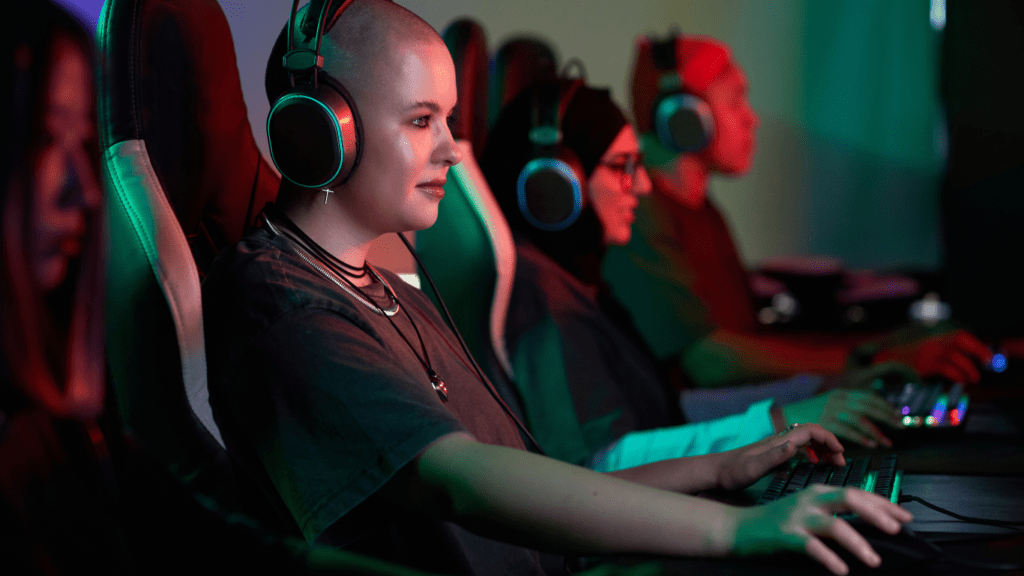Competitive matches are like intricate puzzles, where every player’s role is a vital piece that determines the final picture. Whether it’s the precision of a striker in soccer, the strategy of an in-game leader in esports, or the resilience of a defender, each role carries unique responsibilities that can make or break a team’s performance. It’s fascinating how these roles intertwine to create moments of brilliance—or chaos.
Understanding Player Roles in Competitive Matches
Player roles define responsibilities within a team, aligning individual actions with collective objectives. These roles directly influence how strategies unfold during gameplay.
Defining Common Player Roles
Competitive games often assign distinct roles based on player skill sets and team needs. For example, in team-based shooters, roles like”
- tank
- support
- damage dealer
are key. Tanks focus on absorbing damage, support roles provide healing or utility, and damage dealers deliver consistent offense. In strategy games, roles such as shot-caller, macro-player, and micro-specialist drive structured decision-making and execution. Every role complements the others, ensuring balance and functionality.
Importance of Specialized Roles in Team Dynamics
Specialized roles enhance team synergy by distributing responsibilities effectively. Each player can refine specific skills, improving execution. For instance, in MOBAs, a strong jungler controls neutral zones while laners dominate their lanes. A support player in esports coordinates with teammates to ensure resource allocation and map awareness. Without specialized roles, teams risk overlap or inefficiencies that disrupt strategies.
The Impact of Player Roles on Match Strategy

Player roles fundamentally shape match strategies by dictating how teams execute plans and respond to dynamic gameplay scenarios. Proper role utilization ensures cohesive, goal-focused tactics.
How Roles Influence Tactical Decisions
- Roles act as the blueprint for tactical decision-making during matches.
- Each role has defined tasks that streamline team objectives. For example, a tank in team-based shooters focuses on absorbing damage and creating space, making room for damage dealers to eliminate threats.
- In real-time strategy games, a macro-player oversees resource allocation and long-term planning, integrating the team’s growth into match goals.
- These responsibilities impact key decisions like when to engage, retreat, or contest objectives.
- Teams with a clear distribution of roles reduce confusion, enabling quicker, more decisive reactions.
- Tactical adjustments, such as repositioning supports during critical moments, hinge on role-based responsibilities.
Adapting Roles to Opponent Strategies
Adapting player roles is critical when countering opponents’ strategies. Teams analyze enemy compositions to reassign tasks or prioritize specific targets. In strategy games, shifting a shot-caller’s focus to counter an opponent’s macro-play disrupts their efficiency. In first-person shooters, assigning supports to negate flanking actions weakens the opposing team’s offense.
Dynamic role adaptation allows teams to exploit weaknesses. For example, if the enemy relies heavily on burst damage, allocating resources to defensive roles enhances survivability. Predictable teams often falter when roles remain static against evolving opponent strategies.
Balancing Player Roles for Optimal Performance
Structuring a team with well-defined roles maximizes performance by ensuring synergy among team members. A balanced approach aligns individual responsibilities with collective strategies to maintain competitive effectiveness.
Team Composition and Role Synergy
Selecting roles based on team composition optimizes overall functionality. Balanced teams incorporate complementary roles, such as tanks, supports, and damage dealers in shooters, or shot-callers, macro-players, and tacticians in strategy games. This balance leverages each player’s strengths while addressing potential gaps in coverage.
For instance, in a five-player team-based shooter, assigning two damage dealers, one tank, one support, and a hybrid role enhances adaptability. This setup allows damage output, durability, and healing to contribute equally. Similarly, strategy game teams with defined roles in resource management, engagement tactics, and decision-making ensure smoother execution of complex strategies. Synergetic interactions between roles amplify team efficiency, creating opportunities for coordinated plays and counter-strategies.
Challenges in Assigning Roles
Effective role distribution faces obstacles like overlapping skills, personal preferences, and team dynamics. Players with versatile abilities can complicate assignments if specialization isn’t prioritized. For example, a multi-skilled competitor excelling as both a shot-caller and micro-specialist may create ambiguity in crucial moments if their primary focus lacks clarity.
Personality conflicts and adaptability can present issues in role distribution. If a player resists a support position despite its necessity due to their preference for high-damage roles, the team’s balance may falter. Teams must also adjust roles mid-match to counter opponents’ evolving strategies, presenting the risk of errors during rapid decision-making.





